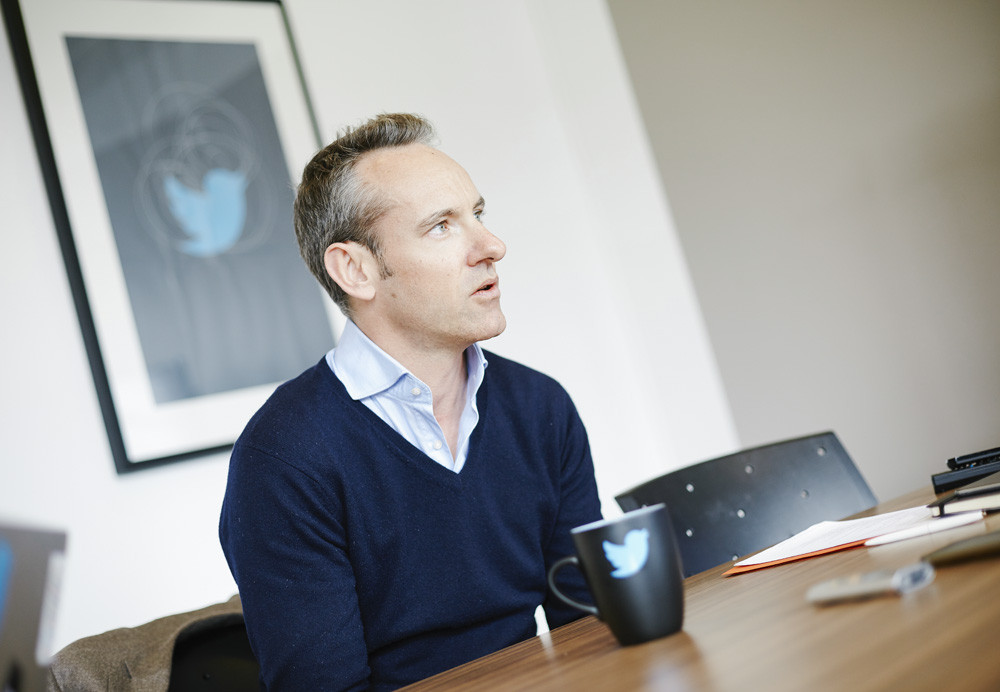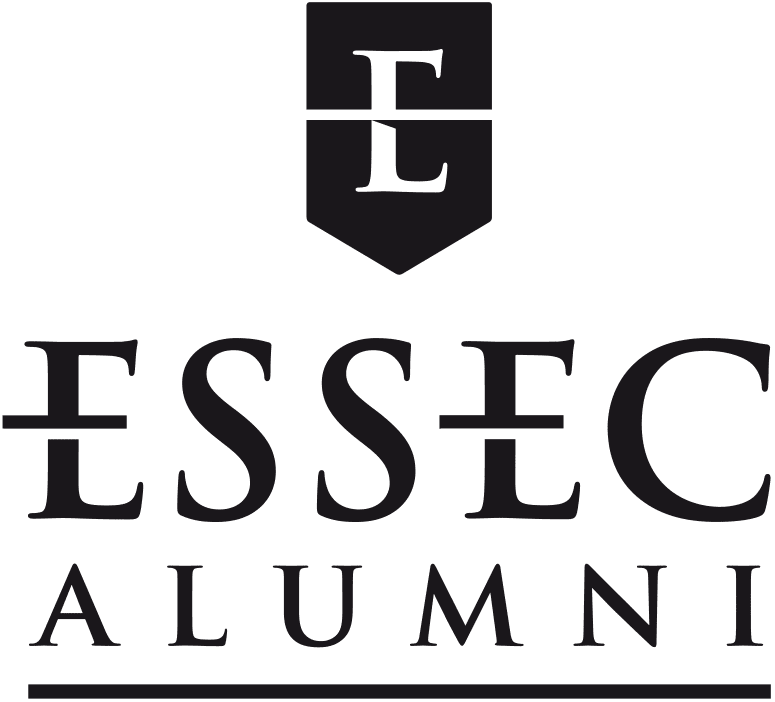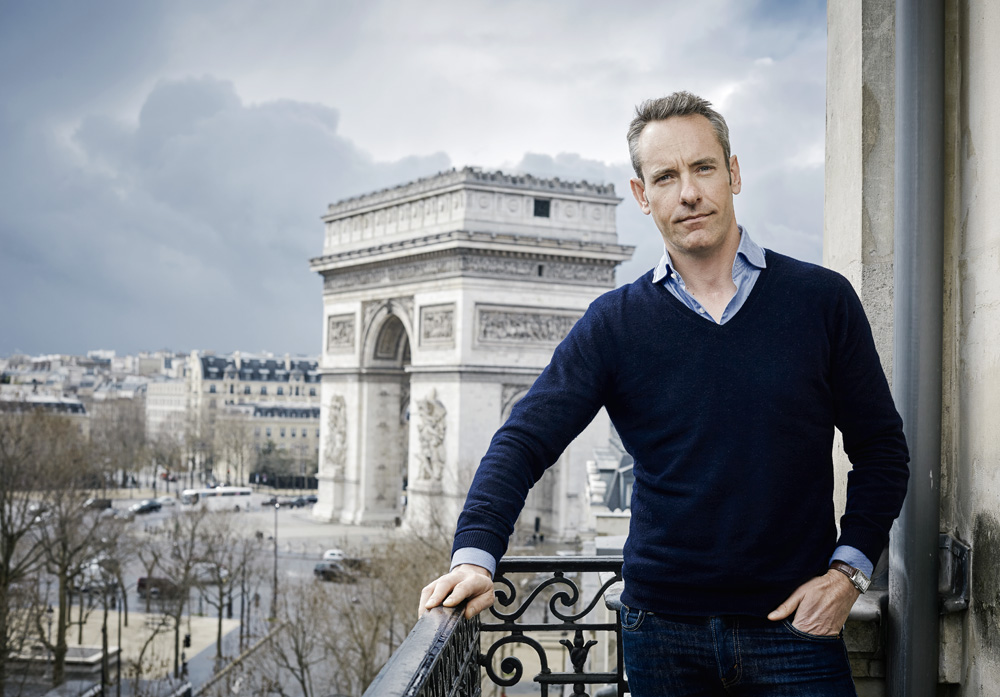Twitter has celebrated its tenth anniversary in 2016. Despite its 320 million active monthly users worldwide, most analysts would say the 140-character microblogging site has not yet found its economic model. This is something its cofounder Jack Dorsey, who returned as CEO of the business in 2015, strongly denies. At the same time, Damien Viel (E97), from YouTube (Google), became the new managing director of Twitter France at the age of 41, backed by a strong track record with various companies and media agencies (M6 Publicité, Carat France). After graduating from ESSEC he went straight to L’Oreal, where he spent eight years before joining Alain Afflelou then Marionnaud. A father of three who is passionate about running (he runs 30 km a week) and modern French cuisine, Damien Viel (@damienviel
) reveals his ambitions for Twitter France and its development prospects in a highly competitive market. An interview by Michel Zerr.
ESSEC Alumni: After spending four years at YouTube, why did you take up the challenge of leading Twitter in France?
Damien Viel: I think it was personally an extraordinary stroke of luck, to have the ambition, at the age of just over 40, to take on a business such as Twitter in France, which is experiencing tremendous growth. I met some people at Twitter in California who made me really want to go there, and I really wanted to work with them. In Paris I also fell under the spell of the whole team: management, media development people, marketing people, customer and business relations, communications people – all the 30 or so people who work there. It was the start of a real love affair.
EA: But if many analysts are to be believed, it is not the best period in terms of growth.
D. Viel: I disagree. I think from a product point of view there’s never been a better period in Twitter’s history. Joining this adventure is an unbelievable opportunity simply because Twitter is at a crossroads. We’re coming to an extremely interesting stage of maturity. The questions being asked today in terms of growth, and the stages to come make for exciting challenges, to say the least. Twitter will succeed by being simpler and meaningful; in other words, we must have a precise grasp of its function and its utility in its environment. During these past ten years, Twitter has fundamentally changed immediate, live communication, conversational communication and public communication. Thanks to our platform, everyone the world over has the chance to say something and to be heard, just as everyone has the chance to go and look for any information they are interested in.
EA: This was particularly the case during the dramatic attacks of 13 November 2015...
D. Viel: It’s true that during the attacks in Paris and Saint-Denis the institutions – the emergency services and the police authorities – used the platform to inform the French people. At the same time, the media helped to relay and verify the information put out, which meant users could not only get information, they could also get together and help one another. The hashtag #PrayForParis was used spontaneously throughout the world to show support and solidarity, and #PortesOuvertes helped people in the street and who couldn’t go home, to find accommodation nearby.
This is the conversational dimension of Twitter, allowing people to express themselves or offer a service. In everyday life, our users use Twitter as the most powerful microphone in the world to spread their messages. Thanks to its live, public and conversational characteristics, they can call out to other users and defend their points of view. As a reminder, the very essence of Twitter is the defense of freedom of expression in all the countries we operate in. Our DNA is an activist DNA, very present in our company culture and the way we protect the interests of our users. To disseminate its content the platform has evolved a great deal, offering 140 characters, images, video and, from now on, live video integrated into timelines with Periscope. We are a resolutely live platform: when something happens in the world, it happens on Twitter and no-one does that today better than we do.
EA: Is video the only medium for advertisers on Twitter?
D. Viel: This is what we need to move more towards, because today there’s no better advertising format. In 2015 we launched an autoplay format for all native videos, GIFs and Vines, which are automatically launched within users’ timelines. We have developed and continue to develop video simply because image and sound offer the most creative format, the demand exists and it’s extremely effective. A tweet containing a video is retweeted six times more than a tweet with an image. Virality and engagement are much stronger than with any other kind of format. The number of video views has also multiplied by 220 in-between 2015 and 2016.
We need therefore to support advertisers and their agencies in making this shift, and in understanding the video advertising format. And why not a live video format tomorrow? We have an opportunity there to be a high-performance, engaging platform. One of our priorities is to show we are a cost-effective investment platform for advertisers, and that we are very complementary to television campaigns. Today we know that intention to buy is multiplied by 2.2 for a brand when a campaign is coordinated on television and Twitter. The big advertisers are also beginning to understand the benefit for them in coming to us all year round, not just for big events discussed on the platform.

EA: What is the relationship between businesses and brands for Twitter in France?
D. Viel: In France, Twitter is becoming a natural space for online customer relationships. If we believe the studies carried out by social media statistics specialist Socialbakers, 80% of the questions asked online are on Twitter. We have therefore become the platform where questions are asked about brands. Our role and our mission are therefore to take this message to big French companies, which nowadays have to be extremely reactive. When a response is personalized, quick and empathetic, there is a real impact on sales and brand loyalty. Add to that the fact that requests are handled better and in larger numbers than in a traditional call center, which represents a real productivity gain. We work on these indicators with companies including banks and large service businesses such as Air France, SNCF or RATP. This is a drastic change in the way brands can and should respond to questions asked by their customers.
EA: Is France an important country for Twitter?
D. Viel: France is very important for at least two reasons. First of all, because Twitter’s audience in France is a qualified audience, an opinion leader, with an over-representation of the upper social and professional categories. Several million French people connect every day, with many users and communities coming together around various subjects including gaming, music, sport, services and news. Secondly, because one of the characteristics in France is the use of our platform by the state, by local and regional administrations and by big public service companies. In France, all towns with populations of more than 100,000 are on Twitter.
At the company’s headquarters in San Francisco they pay particular attention to France on the specific platform side, but also because of its development potential. We are a key country in the worldwide development of the business, with a clear ambition in terms of investment.
Twitter’s development strategy includes France; we want to become a center of excellence in customer service and creativity, with a great deal of autonomy and freedom. In Paris we are a small and very agile business. It is up to us to write our own story on the media scene in the years to come so French people will want to use us because we’re their loudspeaker, particularly for the 2017 presidential election. For all these reasons, in California they consider the French development model to be very promising, and that we will continue to see very strong growth in terms of users and business.
EA: How do you plan to get there?
D. Viel: We have a five-point plan. First of all, to continue to ensure Twitter remains a simple, inclusive, easy-to-use platform. We also need to assert ourselves as the leading live platform in the world in general, and France in particular. Thirdly, we really believe in the need to support the content creators who are going to continue to keep the platform alive. We need very creative partners who use Twitter because of its unique, original nature and we want to invest a lot in that direction. Plus we need to exploit the amazing hothouse of developers that exists in France. There is a tremendous amount of talent, businesses and start-ups here. French Tech is recognized internationally and it’s essential we support it. Finally, we will pursue our commitment to protecting our users.
EA: Have you set commercial targets?
D. Viel: Like all businesses, Twitter’s targets are to have growing, profitable and ethical operations. The platform is at a point in its existence where it needs to consolidate its usage and be meaningful to our users. Everything I have mentioned in terms of services and utility is completely unrelated from a business argument. At the moment, we are not obsessed by this form of business growth at all. What does interest us is growth in usage, users and their satisfaction. Like most Californian companies, we are convinced that the others will follow. Right now this isn’t a subject for discussion. Twitter has the time, the resources, the independence and autonomy and the strategic partnerships to support its development. Our aim is to be useful and also to have influence on French life, allowing people to be heard.
I don’t want to avoid the question of Twitter’s business model, where the growth figures are good, with operations that are now positive, and a positive cash flow. More could probably be done in terms of revenues, but at the moment we’re investing a great deal and prefer to prioritize ergonomics, access, utility and simplicity. Then we’ll see how we can better monetize our audience - but we have absolutely no need to do it at the moment.
EA: You joined L’Oréal when you left ESSEC; 13 years later you went to Google and now Twitter. How have you adapted to two such distinct business cultures?
D. Viel: It’s true that the culture of a business such as L'Oréal is very different from Silicon Valley businesses. I think L’Oréal is still the best “post-school school” for learning about marketing, listening to the consumer, the concept and creativity. What makes L’Oréal a success is a culture based on three key areas: decision-making by confrontation, strong internal emulation and a very vertical hierarchy. When I arrived at YouTube I discovered that instead of the culture of confrontation they had consensus, so everyone was a stakeholder in the decision, allowing everyone to move forward at the same pace.
Instead of emulation and internal competition, the Silicon Valley businesses have absolute transparency – a one-team culture. Concerning hierarchy, the evaluation from your teams is more important than that of your bosses, and this requires many adjustments in terms of management. And it’s probably partly my training at ESSEC that has helped me move so easily from one business world to the other. It’s unique among management and business schools because of the diversity of people there and the students coming in. It’s a school of personalities and talents, with a much stronger mix than other places, and you can see that in the careers of its former students.
EA: What links have you maintained with the school?
D. Viel: I went back there last year at the request of Jean-Michel Blanquer, who is a great Twitter user, to take part in iMagination Week. From my contact with the students I was pleased to see a really stimulating mix of entrepreneurial spirit and their confidence in technology: without a doubt, that mix makes ESSEC a school for the future. The fact that Jean-Michel Blanquer is very present on our platform probably has something to do with the school being, in my view, the best in terms of activity. A school also builds its reputation on its capacity to make a worldwide impact, and the way ESSEC is performing today makes for the creation of a real dynamism and interaction between what the school writes or produces, and the way students use it.
Twitter was founded on 21 March 2006 in San Francisco and the platform opened to the public in July that year. The company has 3,900 employees around the world, almost 2,000 of them in California and 35 in France, where the office was set up in March 2013. Its turnover rose to 2.2 billion dollars in 2015. Twitter, which is available in 35 languages, has some 320 million active users every month and more than 500 million unique users who access the content of the platform each month without connecting to an account (unique logged-out users). Nine million businesses in the world have a presence on Twitter. Several hundred million tweets are sent every day and more than 500 billion have been published since Twitter’s creation ten years ago. The company bought Periscope in March 2015 and more than 100 million videos have been made since the application was launched.
First published in Reflets ESSEC Magazine n°113
. Click here
to subscribe.
Illustration : © Christophe Meireis

Comments0
Please log in to see or add a comment
Suggested Articles



